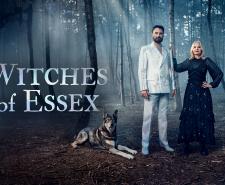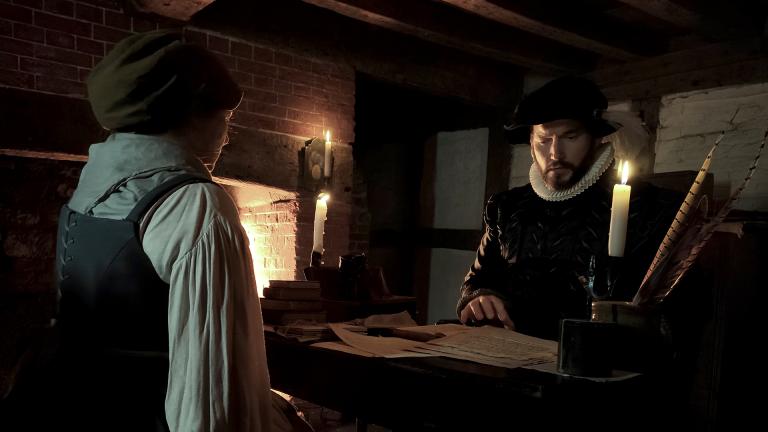
Witches of Essex
Available now on Sky HISTORY or stream now on HISTORY Play

As a ‘cunning woman’, Ursula Kemp was a valued member of her local community in the Essex village of St Osyth. In fact, neighbours often tasked her with curing illnesses. However, she had the misfortune of living in Elizabethan times, when her fellow villagers could perceive a thin line between folk healing and witchcraft.
Ursula fell victim to this paradox in 1582, when she was accused of using sorcery to cause illness rather than banish it. Worse, she was blamed for deaths unexpectedly striking families in the local area. Witchcraft-induced murder was no small charge, and Elizabeth I’s Witchcraft Act had made it punishable by death.
Ursula was just one of more than a dozen alleged witches from St Osyth to stand trial in 1582. This case of the St Osyth witches is among several explored in Sky HISTORY’s Witches of Essex. It’s also very much the archetypal ‘witch hunt’, as it certainly didn’t end in a fair trial. Witches of Essex starts Tuesday 14 October 9pm on Sky HISTORY and HISTORY Play.
What led Ursula, a seemingly long-admired local midwife, to suddenly be hit with a witchcraft accusation? It all reportedly started with a curious sequence of events.
Ursula had been friends with Grace Thurlow, whose son Davy fell sick but later recovered after Ursula (sometimes referred to as ‘Ursley Kempe’) worked her magic. She subsequently hoped to become a nursemaid for Grace’s baby daughter Joan.
When Ursula was passed over for this role, she was hugely disgruntled. To modern eyes, it might seem petty for her to have taken issue with Grace over this, but poverty was rife in St Osyth. Basically, it was a place where women like Ursula needed all the income they could get.
The already tense relations between Ursula and Grace worsened when Joan died in an accident just a few months after her birth. The Thurlow baby had fallen from her cradle and suffered a fatal injury to her neck.
The timing of this seemingly inexplicable tragedy made Grace suspicious of her former friend. As far as Grace was concerned, a folk healer who knew how to lift curses could also theoretically be capable of inflicting them. Had Ursula sought revenge against Grace by killing her precious daughter?
In a sense, Ursula’s reputation as a folk healer had backfired on her. However, that wasn’t the only unfortunate twist of fate for her. At the time of Joan’s death, Grace happened to be working for the Darcys, a family of influential local landowners.
When she reported her grievance with Ursula to the Darcys, one of them – magistrate Brian Darcy – decided to take up the case. He evidently saw it as an opportunity to really make a name for himself in the legal field.
Even worse for Ursula, Brian wasn’t above resorting to underhand tactics to secure a conviction. For example, he wasn’t above deceiving alleged witches to wring confessions out of them.
In Ursula’s case, Brian told her he would treat her with clemency if she confessed. Perhaps emboldened by this pledge, that’s exactly what she did. Sadly, it now looks like Brian’s words were just a ploy to lull her into a false sense of security.
Once the confession escaped Ursula’s lips, Brian failed to show her the mercy he had promised. Instead, he condemned her to death.
Brian had more than Ursula’s own admission to go on. He had also persuaded her eight-year-old son, Thomas, to testify against her. According to Thomas, his mother kept four familiars – demonic animal companions who acted as conduits for her sorcery.
The court heard that these familiars comprised two cats, a lamb and a toad. Though Ursula confessed to witchcraft, she also named several other women as witches. These women, in turn, named others. Eventually, a total of 14 women (including Ursula) from St Osyth were tried as witches at Chelmsford Assizes in 1582.
Only two of these women – Ursula Kemp and Elizabeth Bennett – are known to have been sentenced to hang. However, the proliferation of witchcraft allegations very much reflected the intensity of the wider ‘witch craze’ sweeping across Europe during this time.
The events leading to Kemp’s hanging are dramatised in Sky HISTORY’s Witches of Essex.
You can also subscribe to the Sky HISTORY Newsletter to hear about other intriguing historical documentaries we are lining up for viewers.